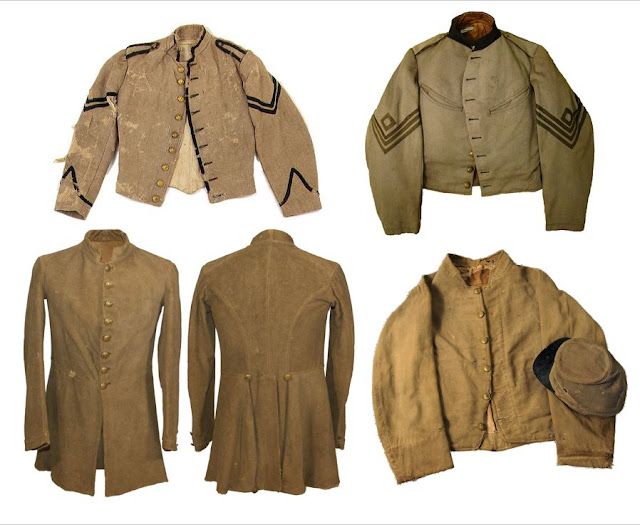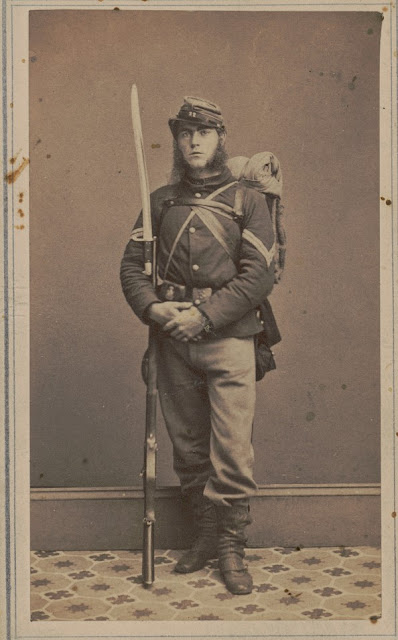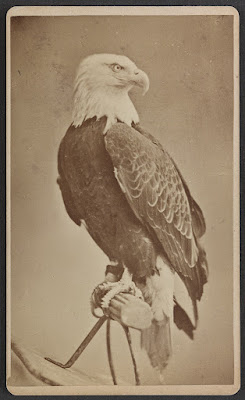A Hoosier Saves the Colors of the 29th Ohio
As General John Pope’s Army of Virginia prepared to fight the Battle of Cedar Mountain, the men of the 7th Indiana delighted in the exploits of one of their comrades.
Captured in the aftermath of the
Battle of Port Republic, Sergeant Harry Fisk was imprisoned in a barn with dozens of
other Federals that night when he saw something that didn’t belong: the captured
colors of the 29th Ohio. “During the night, the thought entered
Harry’s head that they had no right to that flag, so suiting actions to his
thoughts, he waited until all got quiet,” Captain Alexander Pattison recalled. “Then
he tore the flag from the staff and sewed it up between the cloth and linen of
his jacket and cut up the staff with his pocketknife. The next morning, great
inquiry was made for the flag. The commander of the guard offered $30 for its
recovery but no one knew anything about it. The next day, the prisoners were
taken on to Lynchburg where they have been confined ever since. All the time,
Harry jealously guarded the flag.”
A few weeks later, Sergeant Fisk escaped and after a week of tramping through the Virginia wilderness, he arrived safely within Union lines with the colors of the 29th Ohio still tucked safely within the lining of his jacket. Fisk’s story was recounted in a letter written by his company commander Captain Alexander Pattison to the editors of the Aurora Journal, Fisk’s hometown newspaper in Indiana.
 |
| Private John Russell, Co. K, 7th Indiana Volunteer Infantry |
Culpeper
Courthouse, Virginia
August 7, 1862
You will see from the heading of this
letter that we are once more among them. That this rebellion will never be put
down as long as the Old Seventh remains idle. Now that we are again in the
field, something will be done soon; either Jackson will be whipped or he will
whip us. But we have the assurance to think it will be the former for it is now
our regular turn, he having whipped us last time. Of course, he will not insist
on anything that is unfair for Jackson is very much of a gentleman.
And now for the news, for I have some
good news to tell you so that you may know that a soldier may be joyful at
times as well as anybody else. We arrived here at noon today and camped about
three miles from town. About an hour after we had encamped, a soldier from one
of the regiments in camp at town came through our camp. Upon learning what
regiment we were, he said that the little sergeant from Co. A of the 7th
Indiana along with three boys of the 5th Ohio had made their escape
and arrived in town yesterday, bringing with him the colors of the 29th
Ohio that were taken at the Battle of Port Republic.
It needed no second telling to know
that the little sergeant was our dear friend Harry Fisk!
Soon the news spread like wildfire
throughout the regiment and Harry’s name was on every tongue and joy beaming
upon every face for Harry is a favorite throughout the regiment and especially
in his company. I immediately rode to town to get him but he had also heard of
our arrival and had already started to join us. I soon returned to camp and as
I neared camp, I heard tremendous cheering. Harry had arrived, bearing with him
the colors and the regiment had turned out to welcome him. Judging from what I
heard and afterwards saw, no person every arrived within the lines of the camp
of the 7th Indiana ever met with a warmer welcome that did Harry.
But let me tell you his story, at
least give you the outlines and I hope that we will be able to give him a
furlough so that he can tell you all himself. No exertions shall be spared on
my part or the officers of this command. On the morning of June 9th
before the battle, Harry was ordered with 10 men to proceed to the right along
the bank of the river to skirmish. He had been gone but a short time when the
enemy rushed forward upon us and we were compelled to fall back about one-fourth
of a mile into the field.
 |
| Sergeant Fisk and his detachment deployed along the South Fork of the Shenandoah River and were captured when cut off by Confederate cavalry. |
With three others he had advanced out
of sight but the other men seeing us, they immediately returned in a few
minutes. His retreat cut off by the enemy, Harry and his three men pushed on
down the river, hiding behind the bank, intending to meet us about four miles
from the field. But upon reaching the road instead of meeting us as he
expected, he came upon a large force of Rebel cavalry who immediately took them
prisoners.
That night, the Rebels took them about
ten miles from the field. The following day and night they were put in a barn
and guards placed at the door. A stand of colors taken from the 29th
Ohio was also placed in the same room. During the night, the thought entered
Harry’s head that they had no right to that flag, so suiting actions to his
thoughts, he waited until all got quiet. Then he tore the flag from the staff
and sewed it up between the cloth and linen of his jacket and cut up the staff
with his pocketknife. He said that if anyone doubts the difficulty of threading
a needle on a dark night, they should try it.
The next morning, great inquiry was
made for the flag. The commander of the guard offered $30 for its recovery but
no one knew anything about it. The next day, the prisoners were taken on to
Lynchburg where they have been confined ever since. All the time, Harry
jealously guarded the flag. He had several times made arrangements to escape
but finally succeeded on the night of July 29th. He and three others
belong to the 5th Ohio arrived in Culpeper on August 5th
having traveled night and day, making about 40 miles a day. They subsisted
chiefly on berries, swimming rivers, and eluding the enemy.
They passed through Charlottesville
where a Rebel regiment was quartered and they passed themselves off as Secesh.
They arrived nearly exhausted from hunger and hard marching. He gives a very
good account of the treatment received by the prisoners from their captors.
There were 2,238 of our troops prisoners at that time, 41 of them from our
regiment. All of them were trying to make themselves as comfortable as the
circumstances will admit of and looking forward to the time when they will
again rejoin us. One thing is evident: their love for the Rebels is in no way
increased by their captivity.
 |
| Culpeper, Virginia in August 1862. |
Harry is now the hero of the army in Virginia. His name is spoken by all and the act he has just so successfully performed is well worthy of a place in the history of the rebellion. The flag is still in his possession and the 29th Ohio is at Sperryville. They were well nigh wild with delight when they heard of the return of their colors. We anticipate a good time upon the delivery of it. Need I say that I share his honor, that we all share with him the laurels he has so dearly purchased. Everyone in our company is proud that we can say that Harry is one of us. It is no disparagement to any of the rest when we say that he has done more than any, for if we say it ourselves, we think we are as good a company and have done as much hard service as any that have left the Hoosier state. Aurora may well be proud of her boys and with the consent of all his comrades, let the little sergeant be placed at the head of the list for he deserves, richly deserves, whatever praise may be bestowed upon him.
Sergeant Fisk was commissioned a second lieutenant to date August 3, 1862, and held that rank for the remainder of his service, mustering out September 20, 1864. After the war, he moved to Decatur, Illinois.
To learn more about the Battle of Port Republic, please check out these posts:
Theron Winship of the 29th Ohio at the Battle of Port Republic
A Hoosier at Port Republic (7th Indiana)
Source:
Letter from
Captain Alexander B. Pattison, Co. A, 7th Indiana Volunteer
Infantry, Aurora Journal (Indiana), August 21, 1862, pg. 1










Comments
Post a Comment